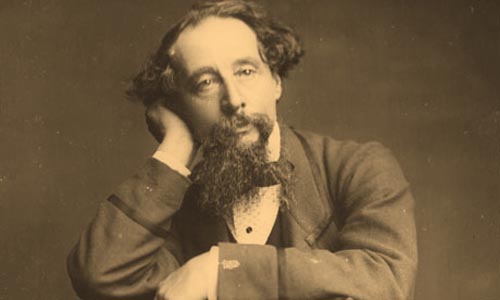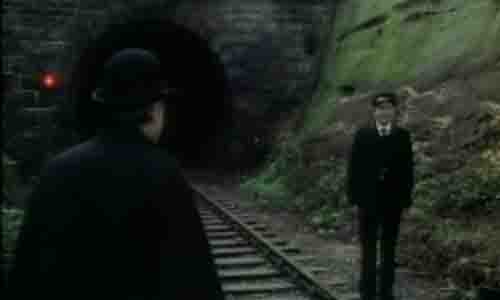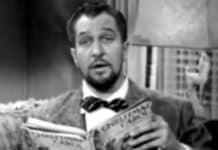BARRY McCANN takes a look at the traditional English Christmas Ghost Story
Do you dream of a white Christmas? If so, why? Nostalgic images of Victorians enjoying a snowbound festive season? The climatic history of Britain shows Victorian Christmases enjoyed no more snow than we do.
So assuming Bing Crosby did not invent it, who did? And how did it also nurture that darker tradition of the festive season, the Christmas ghost story. Both were popularised by one Charles Dickens.
Dickens’s fascination with the supernatural was rooted in childhood through the ghoulish tales related by nursemaid Mary Weller. Affectionately known as Mercy, she reputedly lavished none on the young Charles.
Though only 13 years old when engaged by the Dickens household, she was a colourful storyteller, filling the five year old’s head with the weird and macabre. Her influence on Dickens’s later narrative skills is a legacy the writer himself acknowledged.

Later, the teenage Dickens fed his macabre imagination with the weekly penny dreadful, The Terrific Register, which boasted a body count in each issue.
Such publications tapped into the social psyche and conditions of urban life at the time. Sprawling back streets and slums, poverty and despair, all tempered by occasional reports of dark intrigue and dastardly crime. Ideal backdrops for the macabre and other tales of strange doings.
When the adult Dickens embarked on the first of the Christmas books, his decision to use the festive season as a backdrop for dark, supernatural tales proved not only inspired but ground breaking. A Christmas Carol (1843) is arguably the most famous ghost story of all.
Dickens influences tradition of Christmas Ghost Story
Its influence was to establish new traditions in both the ghost story and the popular narrative of Christmas.
A Christmas Carol is credited for inventing the concept of the White Christmas. Not only does the setting have aesthetic appeal, it also plays a symbolic function.
Dickens believed that while Christmas should be a time of joy, it should also be a period of reflection and change, as portrayed in the reformation of Ebenezer Scrooge.
Snow with its covering and whitening is, symbolically, a purifier; a chance to cleanse old sins and begin anew. No coincidence that newly fallen snow is referred to as virgin.
Not all of Dickens’s supernatural stories were confined to a yuletide setting. The Signal Man which, while not a Christmas story, premiered in the festive edition of All The Year Round magazine in 1866.
Again, the story abounds with popular elements of Victorian fiction such as steam trains, lonely countryside rail station and those mystery apparitions warning of doom.
It was inspired by the real life Clayton Tunnel crash of 1861 which was still fresh in public memory.
Dickens may have started it, but M. R. James is generally thought to have cemented the tradition of the ghost story at Christmas.
As don and later provost at Kings College Cambridge, he wrote many of his stories as Christmas Eve entertainment for a select company invited to his chambers.
There they would sit around the crackling fire with glasses of sherry while James enthralled them with his latest tale of terror.
His stories usually involving the unearthing an antiquarian object that subsequently invokes the attention of a supernatural menace.

James’s prose was presciently cinematic with his descriptions of overwhelming flat Suffolk coastlines and mysterious figures in the distance or within dark shadows.
Consequently, they translate well to film and, during the 1970s, became the staple of the BBC’s “Ghost Story for Christmas”, still celebrated and occasionally revived to the day.
So, for those of us who mourn the passing of the traditional Christmas and lament the commercial binge it has become, here is the plan.
On the night before the day, gather family and friends around in candlelight and regale them with select tales of terrors from the two past masters… And many more.
Check out the videos of Scrooge 1935 and Scrooge 1951!







